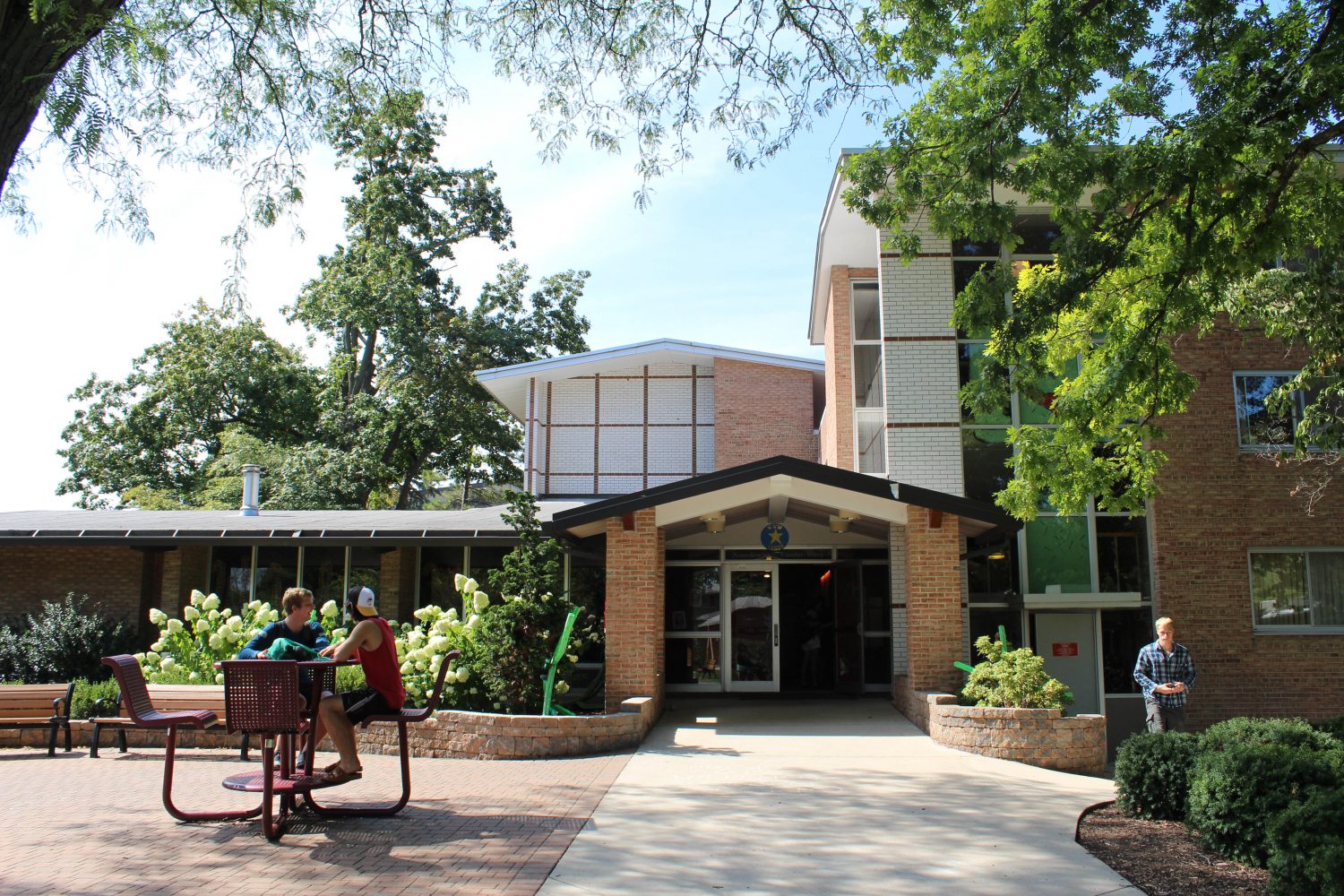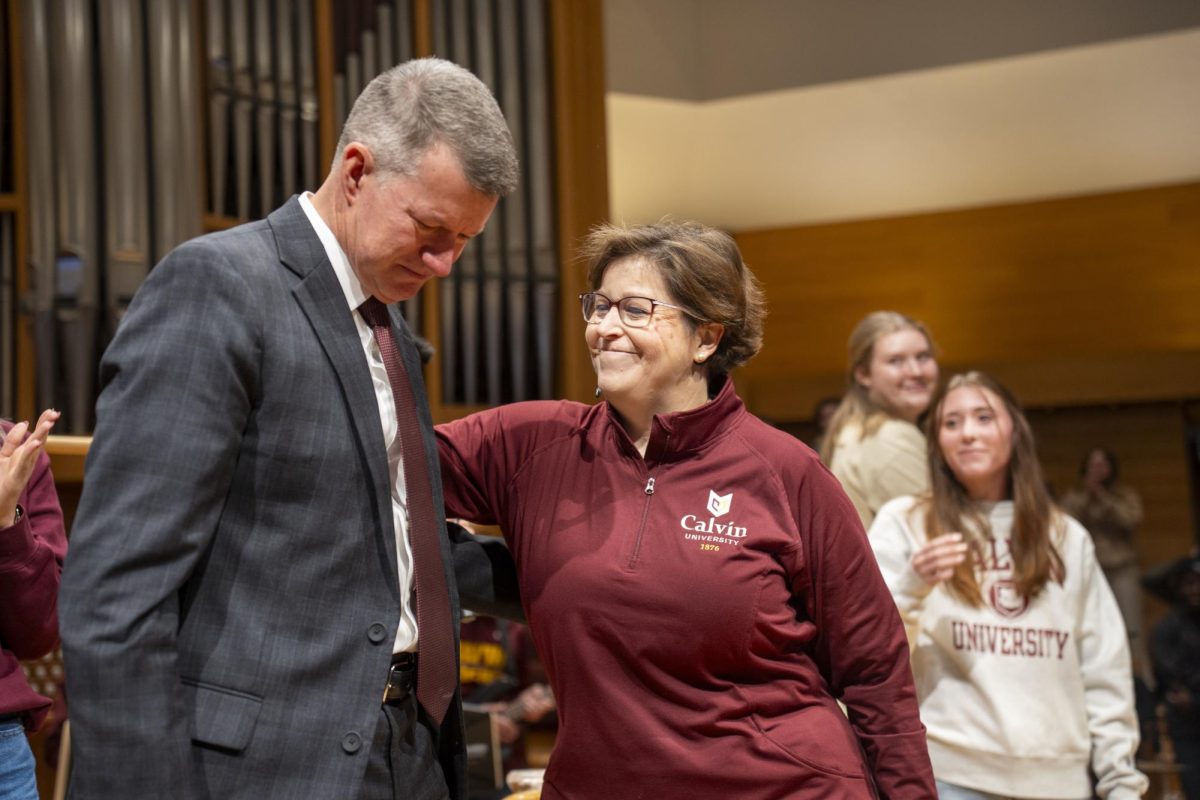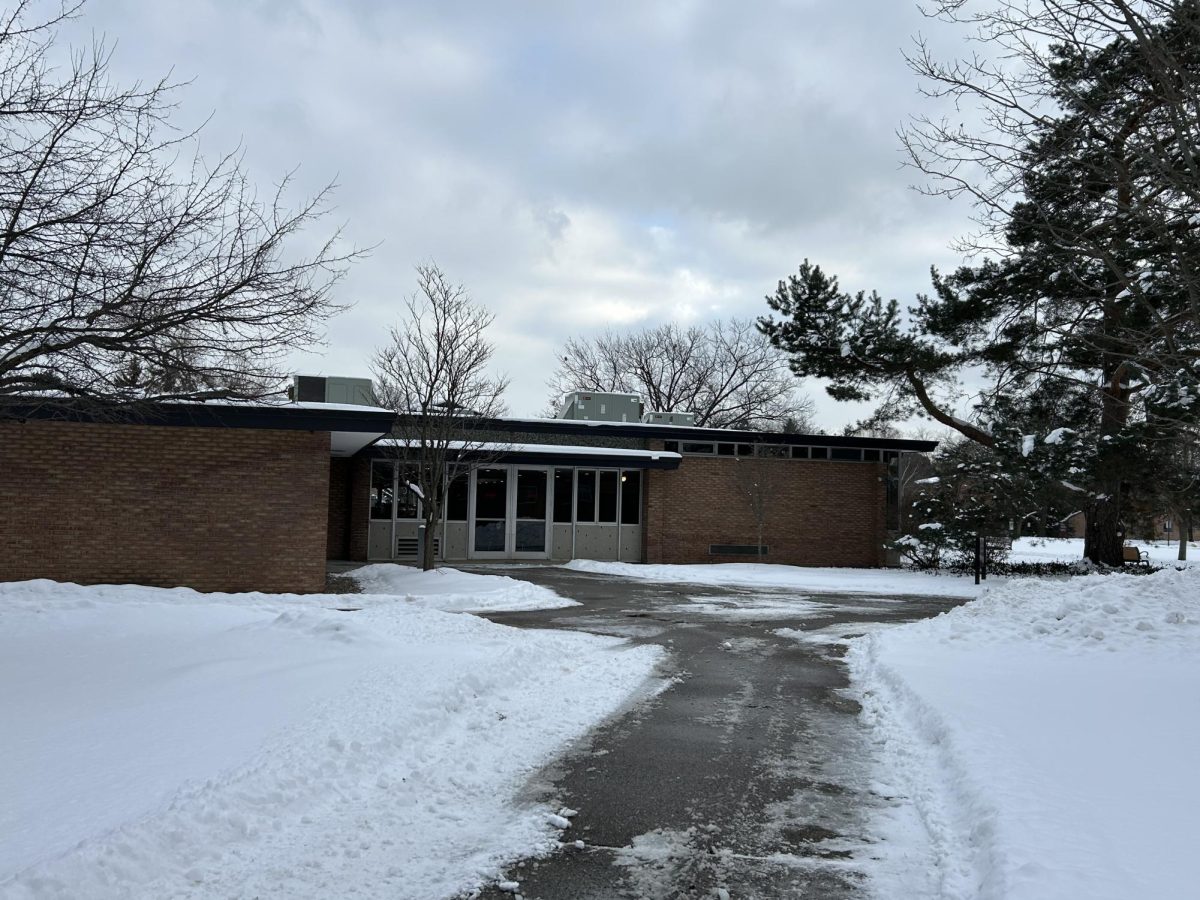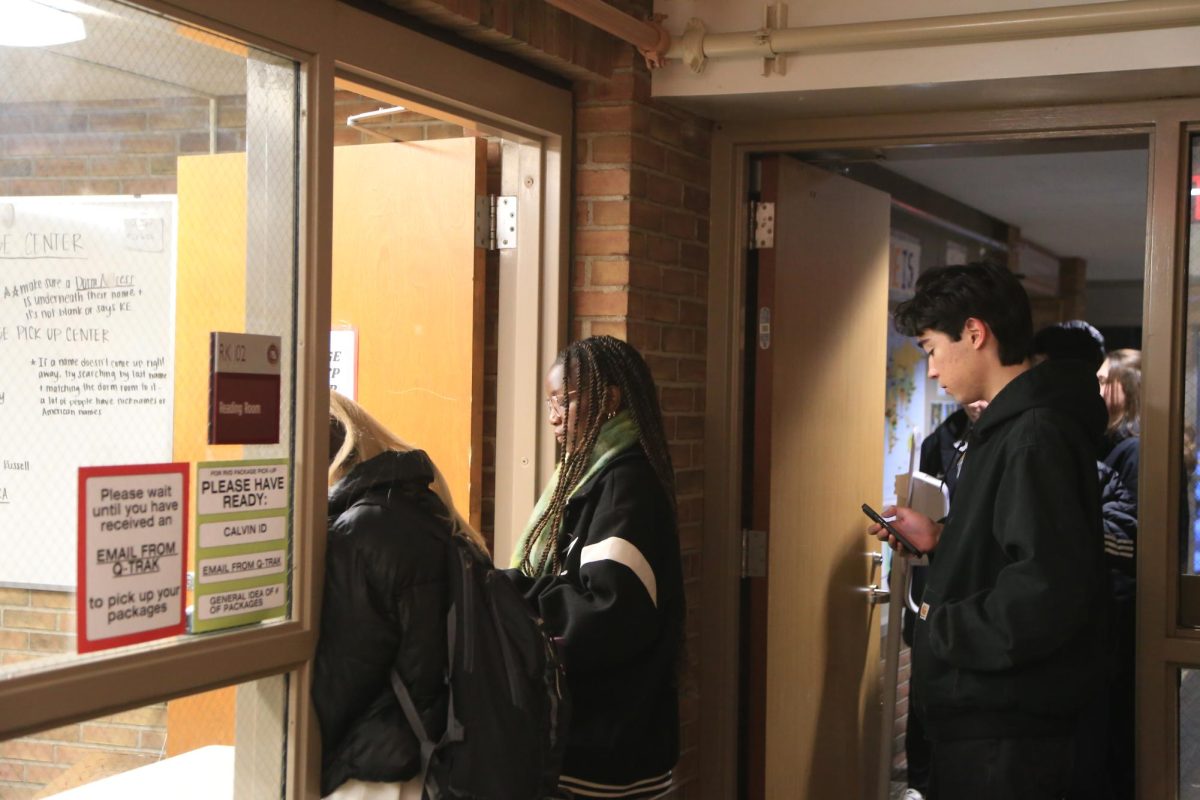At a rate of $9,485 per year, Calvin’s room and board costs much more than it would cost to rent a local apartment and buy groceries from a local store. But administrators say this is the wrong way to think about on-campus living expenses.
“Calvin has a two-year residence requirement because we believe it’s the best way to acclimate to college learning and to independent living, and it is a key part of the integration of students to our community of faith and learning,” said John Witte, dean of Residence Life.
Room and board costs are lumped together at Calvin, and approximately $1,000 per month covers the costs of the dining halls, maintenance and repairs in the residence halls, as well as student services such as safety and programming across the college.
In the dorms, students share a 155-square-foot room with a roommate, and one bathroom serves four people. Were room and board equivalent to rent, this would make Calvin dorms more expensive per square foot than apartments in many boroughs of New York City.
But students are not just paying for a place to sleep. “For most colleges, Calvin included, on-campus housing is considered an integral part of the learning experience of college,” Witte said. “Research in higher education has shown that students tend to learn and perform better and persist through college at higher rates when they live on campus.”
While he admits there are always exceptions and that some students might not have the best dorm life experiences, he said, “The majority of Calvin students view it as a valuable and meaningful part of their experience here.”
“The cost of the dorms are high if you look at it for just the room, coffee kitchen and other facilities it gives you access to,” said sophomore Keagen Johnson. “However, Calvin more than makes up for the value of the experience. I also think some of the value lies in the experience of living with people from all over the world and learning to live responsibly and peaceably with each other.”
But for other students, whether they would like to live in the dorms or not, the cost remains prohibitively expensive. While the cost of on-campus living is factored into need-based aid, scholarships and grants seldom cover everything.
First-year student Mallika David obtained an exemption to the on-campus living requirement and lives with family friends a few miles away. She admits that she misses out on a lot of campus life, but this arrangement was the “only way it was possible” for her to attend Calvin.
David, who is an international student, said students like her often face even steeper education costs because of travel expenses. She knows of several international students who have had to find alternate accommodations.
“I feel really disconnected,” she said. “We don’t have a place on campus to call our own.”
The high cost of living in the dorms pushes a few students to move to apartments after their first year, though high demand means the number of students who can do so is limited. Sophomore Ethan DeVries is one student who made this move after a long appeal process.
“I loved the dorms, and leaving that community was a tough decision to make,” DeVries said. “If cost was not a factor, I would have stayed in the dorms.”
He said he had to navigate this process alone. “There was no framework for doing this,” DeVries said. “I had to schedule meetings and explain my situation.” His appeal was ultimately approved a week after school had already started.
“The guidelines and process should be more clear so students can understand if they meet the requirements to move to KE or not,” he said.
Though students moving to Knollcrest East (KE) apartments move from a dorm room to an apartment with two bedrooms, a living room, dining area and full kitchen, the price of living in the apartments drops by more than half. Students in KE pay $3,820 per year, though meals are not included.
Meals in the dining halls make up a large chunk of on-campus room and board costs, but the college does not separate out the cost of meals from the general room and board sum, so it is difficult to determine the exact expense.
In fact, there is only a minor difference in price between different sized meals plans. A student can move from a 10-meal-per-week plan to a 21-meal plan — a difference of almost 50 meals monthly— for only $75 more per month.
Costs for the plans are calculated assuming most students will use all their meals. “Paying to live on campus includes food, and so in some ways it would be wasteful not to use the meals,” said Witte.
But more factors than just meals and rent explain the cost disparity. Room and board must cover a variety of student services, from the salaries of staff and student employees such as RDs and RAs to utilities, from cleaning to insurance. The exact breakdown of costs is not made public.
Financial Services staff sets tuition, room and board every year with Calvin’s Board of Trustees, and the rate is comparable to peer institutions: Hope’s room and board, for example, falls within a few dollars of Calvin’s.
Witte admits that college is likely to be more expensive in the first two years and encourages students to “focus on the four-year scope.” Living on and off campus have “similar and different opportunities,” he said.
“These things shape us, connect us, give us memories to cherish and cautionary tales of things to avoid,” said Witte.
“I think a Calvin education would look a lot different without the shared experience of life together in our residence halls.”








